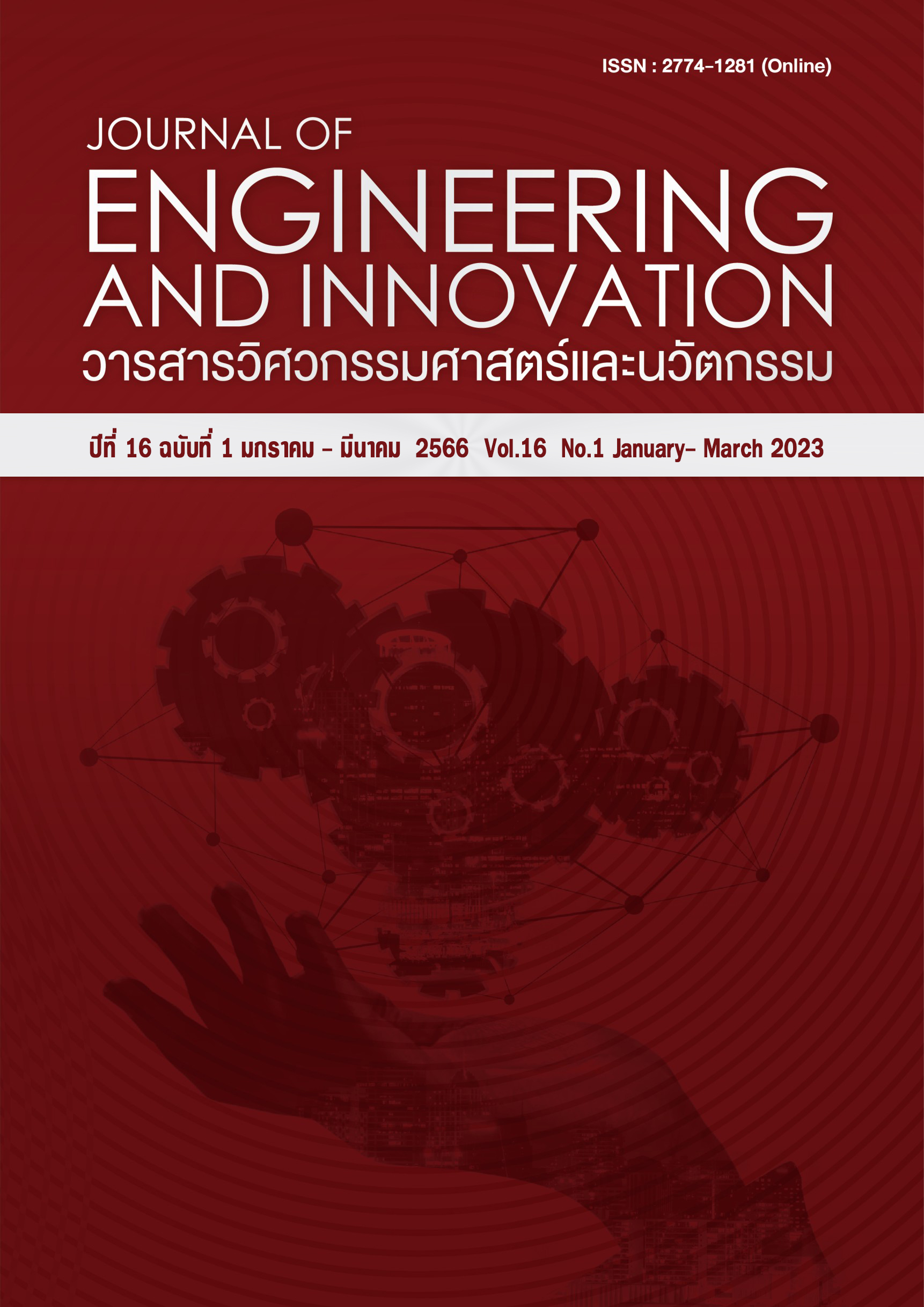Development of electronic fuel Injection system through the use of Arduino Mega 2560 microcontroller
Main Article Content
Abstract
Objective of the current study were to improve the performance of formula student engine by using electronic injection system. In this work, carburetor was substituted by the electronic fuel injection system which Arduino Mega 2560 microcontroller was used as electronic control unit (ECU). The performance of the carburetor and fuel injection (FI) engine were investigated in this work. The results showed that the volumetric efficiency, brake torque, bmep and brake thermal efficiency of FI engine were higher than carburetor engine. Whereas the brake power of both engine was not different. The fuel mass flow rate obtained from the FI engine at the all throttle position opening was lower than the carburetor engine. The bsfc of FI engine was lower than carburetor engine in engine speed range of 4,000-8,000 rpm. However, the bsfc of the both engine was little different in engine speed range of 8,000-10,000 rpm.
Article Details
References
Farrugia M, Farrugia M, Sangeorzan B. ECU Development for a Formula SAE Engine. SAE 2005-01-0027. 2005. SAE International.
Ma Z, Wang X-l. Influence of Fuel Injection on Gasoline Engine Performance. TELKOMNIKA: Indonesian Journal of Electrical Engineering. 2013. p. 2141-2147.
Tan N. Telemetry on wildcat formula racing vehicle. In: Strock J. (eds) Cultivating the Next Generation of Range Engineers: Proceedings of the International Telemetering Conference, 21–24, October 2019, Bally’s Hotel and Convention Center, Las Vegas, Nevada. International Foundation for Telemetering. 2019. p. 1- 5.
Baldisserotto M, Delagrammatikas GJ. Advanced Development and Dynamometer Tuning of a Suzuki GSXR 600cc Engine for an FSAE® Vehicle. SAE 2010-01-0310. 2010. SAE International.
Peng M, Deng X, Liang X, Control strategy and calibration of fuel injection impulse width on EFI motorcycle engine. In: Shen A. (eds.) International Conference on Electric Information and Control Engineering: Proceeding of 2011 International Conference on Electric Information and Control Engineering, 15-17 April 2011, Wuhan, China: IEEE; 2011. p. 2047-2053.
Sarkar SK, Manivannan PV, Ramesh A. An Electronically Controlled System for Parametric Studies on Fuel Injection in an Automotive Gasoline Engine. SAE 2003-28-0002. The Automotive Research Association of India; 2003.
Jeeva B, Awate S, Rajesh J, Chowdhury A, Sheshadri S, editors. Development of custom-made engine control unit for a research engine. 2014 2nd International Conference on Emerging Technology Trends in Electronics, Communication and Networking; 26-27 Dec 2014; Surat, India.
Reddy SJ, Kumar GP, Shravya B. Camless engine using electromagnetic valve actuator. Internatioanl Journal of Precious Engineering Research and Applications. 2018;3(2):6.
Khenuam E, Thepjan P. Improvement of intake system for a formula student race car. Mechanical engineering [thesis], Mechanical engineering department, Rajamangala University of Technology Lanna Tak; 2014.
International Organization of standards, Measurement of fluid flow by means of pressure differential devices-part 1: Orifice plates, nozzles and venturi tubes inserted in circular cross-section conduits running full, Geneve, Reference number: ISO 5167-1, 1991.
Heywood JB. Internal Combustion Engine Fundamentals: McGraw-Hill;1988.
Gupta HN. Fundamentals of internal combustion engines: PHI Learning;2012.
Ferguson CR. Internal Combustion Engines: Applied Thermosciences: Wiley;1986.
Robinson Y, Dhandapani S. Experimental Investigation on Electronic Fuel Injection in a Two-Stroke SI Engine by Virtual Instrumentation Technique. The International Journal of Engineering Education. 2005. p. 55-62.

